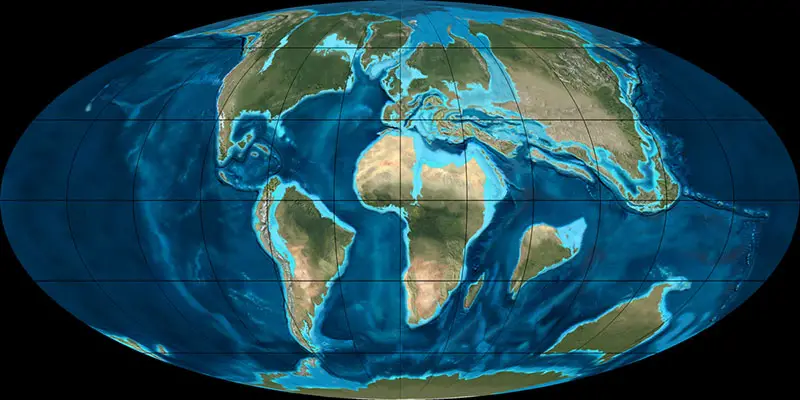†Phoxomylus (Palaechthonidae)
Phoxomylus ist eine Primatengattung innerhalb der Familie Palaechthonidae, deren 2 Mitglieder ab dem frühen Paläogen (Paläozän) im Danium lebten, das vor ungefähr 66 Millionen Jahren begann und bis vor 61,6 Millionen Jahren andauerte. Viele Überreste wurden in Kanada gefunden.
Phoxomylus aus der Familie Palaechthonidae (Ordnung Plesiadapiformes) war vom mittleren bis ins späte Paläozän in Nordamerika verbreitet.
Phoxomylus puncticuspis
Das Typusexemplar mit der Bezeichnung UALVP 50991 ist ein linker oberer Backenzahn (möglicherweise M1). Er stammt aus der Paskapoo Formation von Kanada und ist zwischen 60,2 und 56,8 Millionen Jahre alt.
| Sammlung | Kommentar zum Fundort | Epoche, Alter | Geologie, Formation | Kommentar zur Sammlung |
|---|---|---|---|---|
| Cochrane 2 | Paskapoo | Cochrane 11; Cochrane II | ||
| Kommentar z. Stratigraphie | Lithographie | Kommentar z. Taxonomie | ||
| reassigned from the Porcupine Hills Formation to the Paskapoo Formation by Fox (2011) fossils are from "within an interval ranging from a few centimeters to a meter or so in thickness" (Fox 2011) | "poorly bedded grayishgreen siltstones, rich in broken bivalve and gastropod shells that are accompanied by bits of coalified wood and occasional wellrounded pebbles" (Fox 2011) | same as the list given by Fox 1990a |
| Physiologie | |
|---|---|
| Gewicht: | ? |
| Schwestertaxa | |
